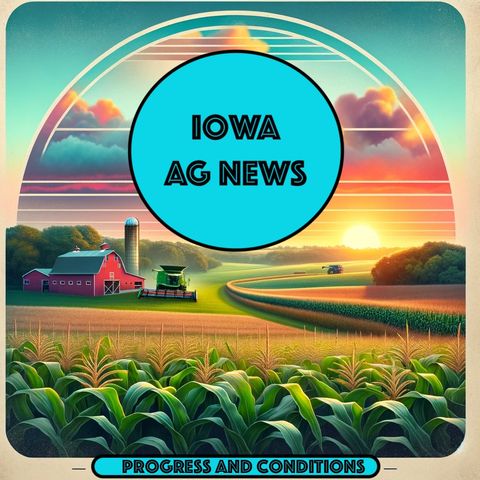10 APR 2024 · In a week marked by colder than normal temperatures, rain, and snow, Iowa farmers struggled to make progress in their fields. According to the USDA's National Agricultural Statistics Service, farmers had only 2.8 days suitable for fieldwork during the week ending April 7, 2024. Despite the challenges, some producers managed to apply anhydrous, manure, and dry fertilizer, though high winds prevented them from spraying fertilizer towards the end of the week.
The weather's impact on soil moisture levels was evident, with topsoil moisture rated 14 percent very short, 35 percent short, 47 percent adequate, and 4 percent surplus. Subsoil moisture levels were even more concerning, with 26 percent rated very short, 38 percent short, 34 percent adequate, and only 2 percent surplus. These conditions have left farmers eager for more favorable weather to proceed with their spring planting.
Oats seeding, however, made some headway, reaching 32 percent complete—6 days ahead of last year and 1 week ahead of the 5-year average. Oats emergence reached 4 percent complete. Pastures continued to green up, but there were no reports of cattle being turned out to graze yet. Calving was in full swing, with some areas reporting mud-related challenges.
Justin Glisan, Ph.D., State Climatologist at the Iowa Department of Agriculture and Land Stewardship, provided a preliminary weather summary for the week. Temperatures were near normal in western Iowa but four degrees below average in the east, with the state's average temperature at 42.1 degrees, 1.8 degrees below normal. Precipitation was above average in eastern Iowa, ranging from 125 to 400% of normal, while the southwest corner experienced unseasonably dry conditions.
The week began with thunderstorms in southeast Iowa on Sunday (31st), some of which became severe-warned, with reports of 1.00-inch hail in Lee and Van Buren counties. Heavier rain was also reported, with several stations collecting more than an inch of moisture. As the week progressed, a mix of rain and snow showers moved across the state, accompanied by strong winds. Some areas in eastern Iowa saw significant snowfall, with Dubuque reporting 5.7 inches.
Despite the challenging weather conditions, farmers remain hopeful that more favorable weather will arrive soon, allowing them to catch up on fieldwork and planting. As soil temperatures slowly rise and the threat of frost diminishes, Iowa's agricultural community is poised to make the most of the upcoming growing season.


